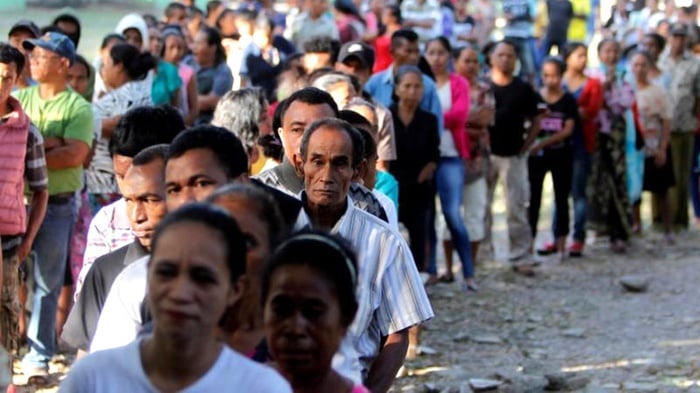Reuters and AlertNet are not responsible for the content of this article or for any external internet sites. The views expressed are the author's alone.
DILI, 26 April 2010 (IRIN) - Almost a third of Timor-Leste's maize harvest is lost each year due to poor storage facilities, analysts say, fuelling food insecurity.
"This is a multi-faceted problem, but better storage containers could certainly mitigate the problem, provided people understand their benefits," Paul Joicey, country director for Oxfam, told IRIN.
About three-quarters of the country's 1.1 million inhabitants live in rural areas and engage in subsistence farming, storing whatever food is needed at home, leaving it vulnerable to insects and rats.
Each year, farmers produce approximately 100,000MT of maize, the main food source, said Chana Opaskornkul, emergency programme officer for the UN Food and Agriculture Organization (FAO).
"Out of that 100,000 tonnes, 30 percent is already lost in storage," he said.
Food is typically stored in sheds or barns, with corn husks tied to rafters or trees.
But there are several simple technologies available locally - including jerry cans and oil drums - that could be used, said Joicey.
Since 2002, FAO has been working with local blacksmiths to produce small, household-sized silos with a storage capacity of up to 1.5MT but there is a need for thousands more.
To date, some 8,000 have been produced at a subsidized cost of between US$7 and $30.
Food insecurity
In 2008, a baseline survey by Oxfam found that in some districts there is normally a two- to three-month "hunger period" of very little food before maize harvesting.
According to the World Food Programme (WFP), about one-third of the population regularly experiences food shortages, notably towards the end of the two lean seasons between harvests, October-November and February-March. [See: http://www.irinnews.org/Report.aspx?ReportId=88648]
"The more production you have, the more you lose. Last year was a good year, with good seeds and weather conditions, and the production went up to 150,000MT, but it meant we lost almost 45,000MT. This is almost equal to the amount that needed to be imported from other countries," the FAO official said.
The national food demand is 200,000MT, so the government has to make up the deficit by importing food, primarily rice, which has proved difficult to distribute to rural communities.
According to the UN Children's Fund (UNICEF), almost half of all children under five are chronically malnourished, so with few opportunities for non-farming income, the need for quality food distribution remains strong.
In eastern Baucau district, Maria De Jesus Belo, chief of Gariwai village, said she had three groups in her village working with FAO.
"There is a concern about the post-harvesting, because we need containers to store the harvest. Some people cannot get the containers because sometimes it's expensive or they cannot find them," she said.
Further challenges
Storage techniques are not the only problem hampering farmers.
Use of low-quality seeds, inadequate seed quality at planting season, poor use of paddy fields, no access to fertilizer and fluctuating weather conditions all take their toll.
Gil Rangel, national director for agriculture and horticulture at the Ministry of Agriculture and Fisheries, told IRIN that Timor-Leste produces about 50,000MT of rice a year, roughly half what is needed.
"We face some difficulties because when we store the seeds after harvest, insects attack them and the food is wasted. That's why we introduced some new varieties of seeds to increase production. For rice, we introduced one variety called 'nakroma'."
Already, the pest-resistant rice is becoming popular among farmers because it can give up to a 40 percent increase in crop yield compared with the local variety.
In addition, Timor-Leste's farmers only produce up to about 1.5MT of rice per hectare per year due to poor irrigation, one of the lowest yields in the world.
Unpredictable weather conditions can also be disastrous for the country. Drought in 2001-2002 and a late rainy season in 2002-2003 caused a 34 percent decline in the production of maize. The same thing happened in 2007-2008, when the country was hit by mild El Niño, combined with infestation by migratory locusts.
Rangel estimated that it will be at least five years before Timor-Leste meets all its food requirements.
mc/ds/ey/mw
© IRIN. All rights reserved. More humanitarian news and analysis: http://www.IRINnews.org news ## for search indexer, do not remove -->











 Fonte:. M. de Almeida Serra em
Fonte:. M. de Almeida Serra em



 Destes, quase 20% estão sob administração do
Destes, quase 20% estão sob administração do